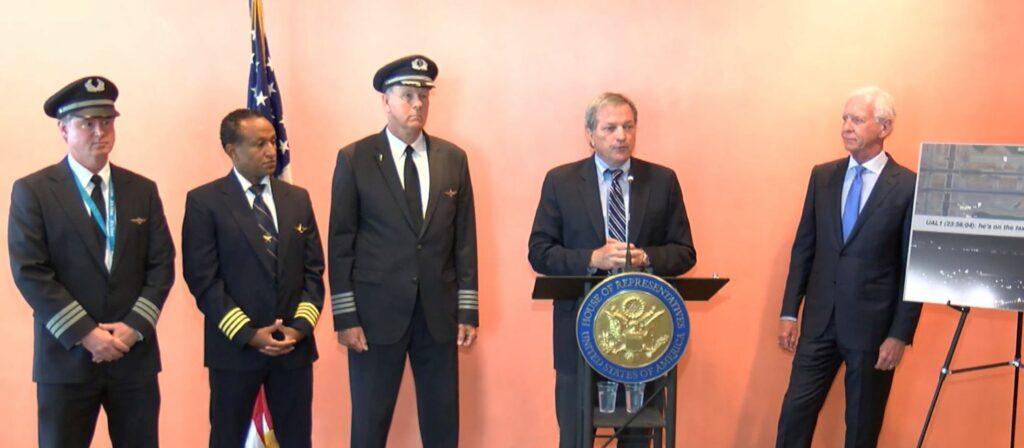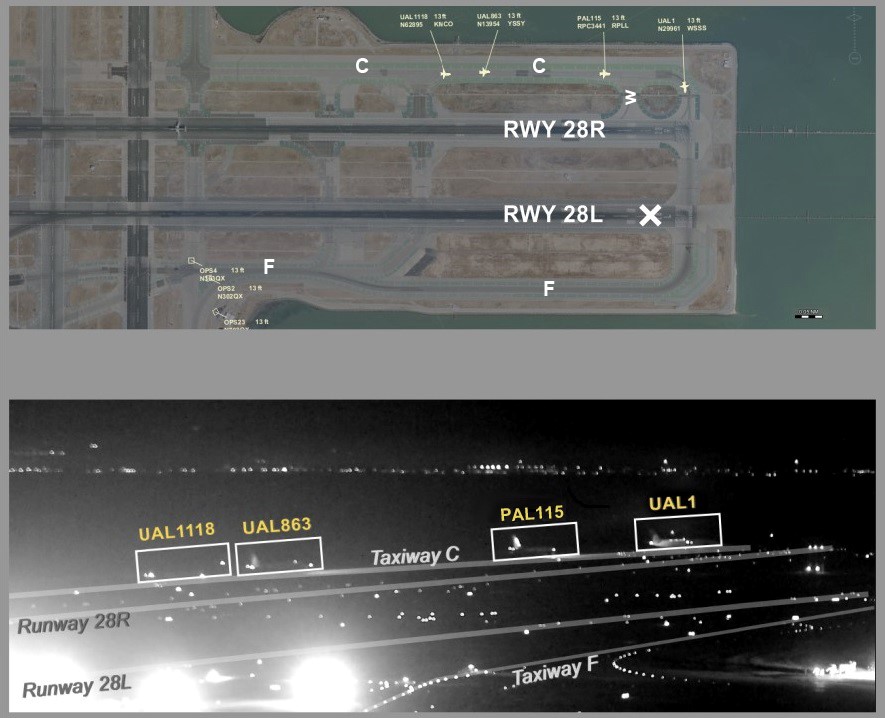
With the help of the pilot who is arguably the most popular aviator since Charles Lindbergh, a California Congressman is proposing legislation that strengthens the power of the nation’s air investigators in dealing with the Federal Aviation Administration. But some are worried about inserting politics into aviation safety.
At a news conference on Thursday, Cong. Mark DeSaulnier and Capt. Chesley (Sully) Sullenberger the now-retired US Airways pilot of Miracle on the Hudson fame, announced a need to correct flaws in the nation’s safety system.
Referring to the uniformed airline pilots who shared the stage, Capt. Sully said of their job, “These gents and their colleagues make it look easy, but it’s not.” After which, the congressman chimed in, “We’ve got a good system but we should constantly be vigilant and make it better.”
DeSaulnier’s Safe Landings Act, orders the FAA to improve technology and address human factors in aviation safety. It is the product, he said, of a two-year study initiated by the near-disaster at San Francisco International Airport on July 7, 2017.

Late that night, an Air Canada Airbus A320 from Toronto was approaching touchdown when the pilots realized they were not aligned on their assigned runway but above a taxiway on which four loaded airliners were lined up for departure.
But for the last-second decision to perform a go-around, Air Canada Flight 759 could have slammed into the line of airplanes creating the world’s most catastrophic air accident and killing more than a thousand passengers. As it was, the plane came within feet of hitting the first airplane in the line, a United Boeing 787.
“There are close calls, near-miss events but each time they occur, they should be an alarm, a warning to redouble our efforts to avoid complacency and look for the systemic risks to avoid an accident,” Capt. Sullenberger told the reporters.
To that end, the proposed legislation focuses on runway events, specifically requiring that the FAA follow the NTSB recommendation resulting from its investigation into the Air Canada event. It also orders the FAA to find technology that will warn pilots and air controllers if airliners are incorrectly positioned for landing or departure and mandate its installation in cockpits and control towers.

“Its the silliest piece of legislation, I’ve ever seen,” said Mark Dombroff, an aviation attorney whose background includes stints at the Department of Transportation and the Federal Aviation Administration. The relationship between the NTSB which conducts investigations and suggests safety improvements and the FAA which can ignore or adopt those suggestions as it sees fit, was defined by Congress in 1974.
The “large body of expertise resides” at the FAA and the NTSB, Dombroff said and “the best evidence is the safety record of the airline industry in this country. That’s no accident, that’s a function of the FAA and industry working together.”
Coming during an onslaught of news over the past few months over two fatal crashes of Boeing’s new 737 Max, DeSaulnier’s legislation sounds like good news for the traveling public. But little in the 20-page bill, budgeted to cost taxpayers $20 million, isn’t already the subject of lengthy study.
In 2006, 49 people died when a Comair regional jet crashed after pilots took off from the wrong runway in Lexington, Kentucky, prompting the first of several airport safety improvement programs over the past decade.
And there was some head-scratching in the air safety community with another of the bill’s main goals; addressing human factors in aviation by creating an FAA task force.
For the past two decades, human factors research has a top area of focus and not just in the US, but internationally at government and industry organizations.

Now, with all eyes on the Boeing 737 Max, its questionable design and the FAA’s equally suspect oversight of the certification process, there’s plenty of improvement that can be made to the process of assuring safe skies. But the Safe Landings Act is off-point and ill-informed, according to Jeff Guzzetti who worked in the FAA, the NTSB and for the Inspector General overseeing aviation audits and is now is a private aviation safety consultant.
It “will actually decrease safety by diverting attention and efforts of true safety professionals in order to satisfy a politician’s well-intentioned but impractical requirements that provide only a panacea,” Guzzetti said.
Dombroff agrees. No good will come of bringing safety issues best handled by the experts into a political process, he says.
“Should Congress prescribe aviation safety standards? No. It should perform its oversight obligation and make sure the agency itself is carrying out its mandate.”

Author of The New York Times bestseller, The Crash Detectives, I am also a journalist, public speaker and broadcaster specializing in aviation and travel.









Regardless of the merits of the bill, it’s always good for Congress to ask why FAA has always been so reluctant to force technological improvements to address runway incursions. Not much has changed since the Forerunner Foundation posted this video issue brief on the subject:
https://m.youtube.com/watch?v=Vd2b8Y0yuFE